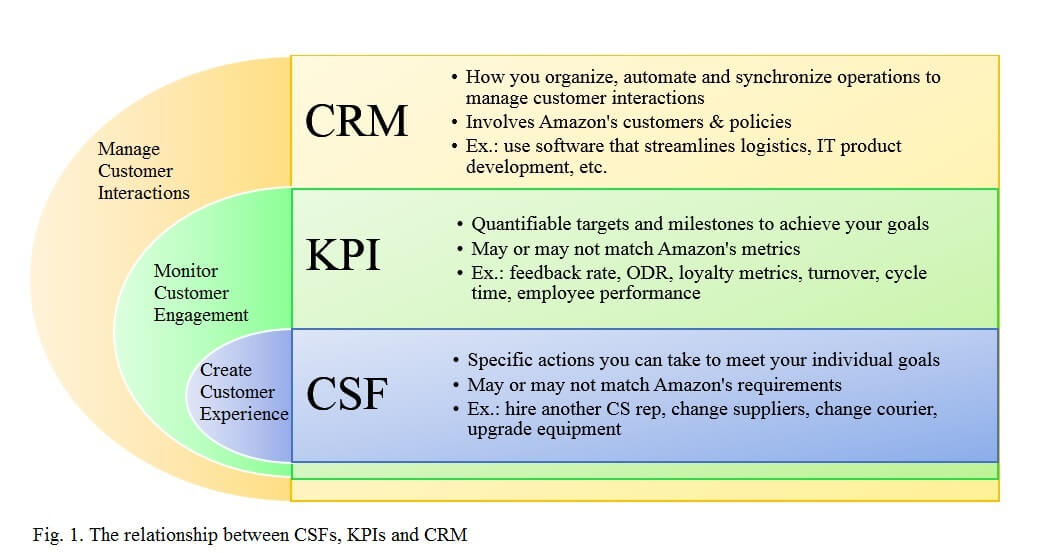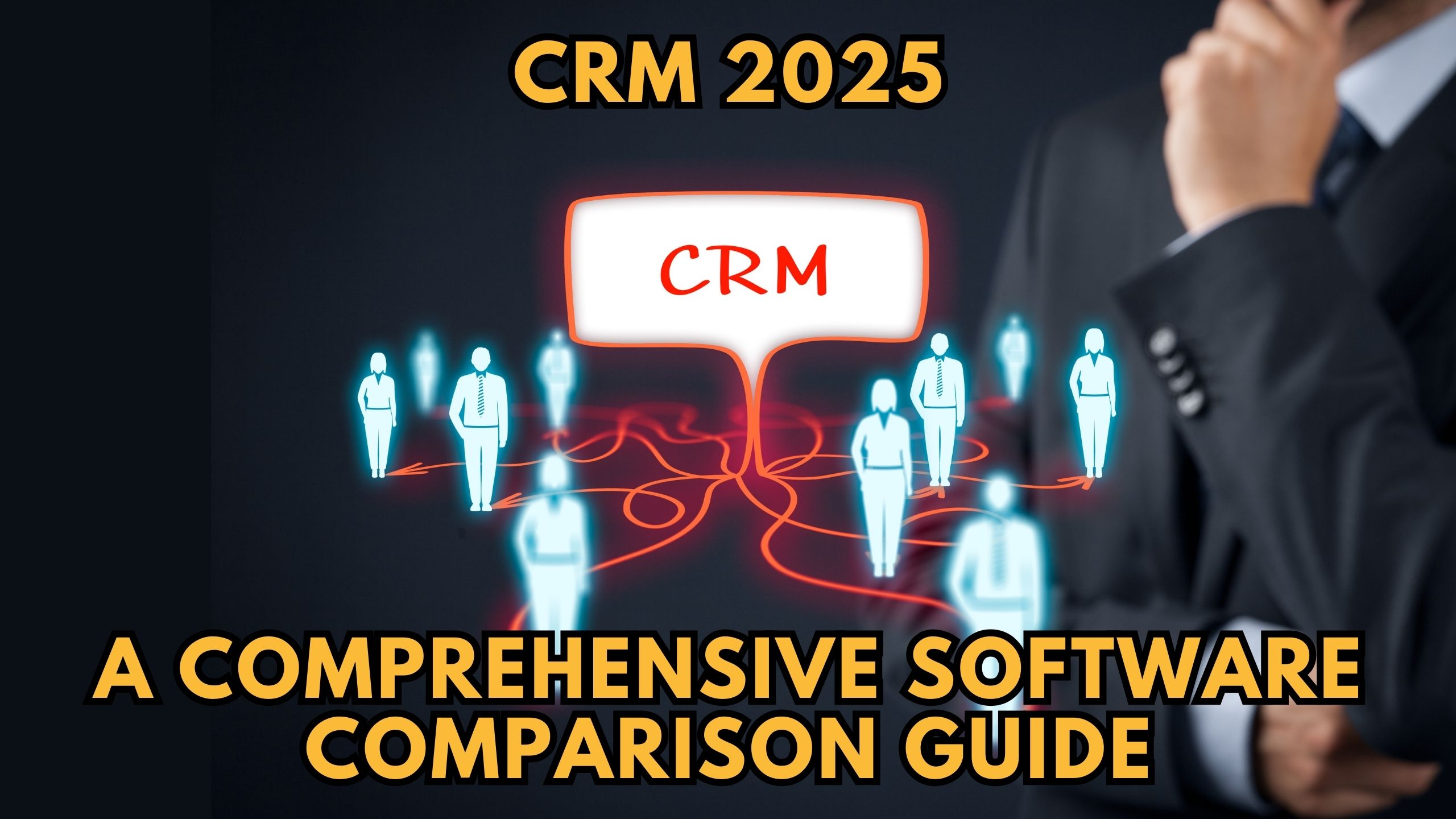
Introduction: The Power of Synergy – CRM and Email Marketing United
In the ever-evolving digital landscape, businesses are constantly seeking ways to optimize their marketing efforts and forge stronger connections with their audience. Two powerful tools that stand out in this quest are Customer Relationship Management (CRM) systems and email marketing platforms. Individually, they offer significant benefits. However, when integrated, they become a formidable force, capable of transforming the way you interact with customers and drive unprecedented growth.
This comprehensive guide delves into the world of CRM integration with email marketing, exploring its profound impact on your business. We’ll uncover the core benefits, step-by-step implementation strategies, and best practices to ensure a seamless and effective integration. Whether you’re a seasoned marketer or just starting, this guide will equip you with the knowledge and tools to harness the full potential of this powerful synergy.
Understanding the Fundamentals: CRM and Email Marketing Explained
What is CRM?
Customer Relationship Management (CRM) is more than just software; it’s a strategic approach to managing and nurturing your company’s interactions with current and potential customers. At its heart, a CRM system acts as a centralized repository for all customer-related data, including contact information, purchase history, communication logs, and more. This comprehensive view empowers businesses to understand their customers better, personalize interactions, and build lasting relationships.
Key features of a CRM system typically include:
- Contact Management: Storing and organizing customer contact information.
- Lead Management: Tracking and nurturing potential customers through the sales pipeline.
- Sales Automation: Automating sales processes, such as lead assignment and follow-up.
- Reporting and Analytics: Providing insights into sales performance and customer behavior.
- Customer Service: Managing customer inquiries and support requests.
What is Email Marketing?
Email marketing remains one of the most effective digital marketing channels, allowing businesses to connect with their audience directly and deliver targeted messages. Email marketing involves creating and distributing emails to a list of subscribers, with the goal of promoting products or services, sharing valuable content, and building brand awareness.
Key components of email marketing include:
- Email List Management: Building and segmenting your email subscriber list.
- Email Design and Creation: Crafting visually appealing and engaging email templates.
- Campaign Management: Planning and executing email campaigns.
- Automation: Setting up automated email sequences, such as welcome emails and abandoned cart emails.
- Analytics and Reporting: Tracking email performance metrics, such as open rates, click-through rates, and conversions.
The Magic of Integration: Why CRM and Email Marketing Belong Together
While both CRM and email marketing are valuable tools on their own, their true power is unleashed when they’re integrated. Integration allows you to seamlessly share data between the two systems, creating a unified view of your customers and enabling personalized, targeted marketing campaigns. This synergy translates into significant benefits for your business.
Key Benefits of CRM and Email Marketing Integration:
- Enhanced Customer Understanding: By combining customer data from your CRM with email engagement data, you gain a deeper understanding of customer preferences, behaviors, and needs.
- Improved Segmentation and Targeting: Integrate data to create highly specific customer segments based on demographics, purchase history, website activity, and email engagement, enabling you to send highly targeted and relevant email campaigns.
- Personalized Email Experiences: Leverage CRM data to personalize email content, subject lines, and calls to action, making each email feel tailored to the individual recipient.
- Automated Workflows: Automate email marketing processes based on CRM triggers, such as a new lead being added or a customer making a purchase. This saves time and ensures consistent communication.
- Increased Conversion Rates: Targeted and personalized email campaigns are more likely to resonate with customers, leading to higher open rates, click-through rates, and conversions.
- Improved Sales Performance: CRM integration with email marketing can help sales teams identify and nurture leads more effectively, leading to increased sales and revenue.
- Streamlined Data Management: Eliminate manual data entry and reduce the risk of errors by automatically syncing customer data between your CRM and email marketing platform.
- Better ROI: By optimizing your marketing efforts and improving conversion rates, CRM integration with email marketing can significantly improve your return on investment (ROI).
Step-by-Step Guide: How to Integrate CRM with Email Marketing
Integrating your CRM and email marketing platform can seem daunting, but with the right approach, the process can be straightforward. Here’s a step-by-step guide to help you get started:
1. Choose the Right Platforms:
The first step is to select a CRM and email marketing platform that meet your business needs. Consider factors such as:
- Features: Ensure that both platforms offer the features you need, such as contact management, lead scoring, email automation, and reporting.
- Integration Capabilities: Check if the platforms offer native integrations or third-party integrations.
- Scalability: Choose platforms that can grow with your business.
- Pricing: Consider the pricing plans and choose the one that fits your budget.
- User-Friendliness: Select platforms that are easy to use and navigate.
Popular CRM platforms include Salesforce, HubSpot, Zoho CRM, and Microsoft Dynamics 365. Leading email marketing platforms include Mailchimp, Brevo (formerly Sendinblue), Constant Contact, and Klaviyo.
2. Identify Your Data Needs:
Determine which customer data you want to sync between your CRM and email marketing platform. This might include contact information, purchase history, lead source, website activity, and email engagement data. This will inform which fields you need to map during the integration process.
3. Choose an Integration Method:
There are several ways to integrate your CRM and email marketing platforms:
- Native Integration: Many platforms offer native integrations, which are pre-built connections that require minimal setup. This is often the easiest and most straightforward method.
- Third-Party Integration Platforms: Platforms like Zapier, Make (formerly Integromat), and PieSync (now part of HubSpot) can connect different applications, even if they don’t have native integrations.
- Custom Integration: If you need a more customized integration, you can use APIs (Application Programming Interfaces) to connect your platforms. This method requires technical expertise.
4. Set Up the Integration:
Follow the instructions provided by your chosen integration method. This typically involves:
- Connecting Your Accounts: Authorizing the integration platform to access your CRM and email marketing accounts.
- Mapping Data Fields: Matching the corresponding fields between your CRM and email marketing platform. For example, you would map the “First Name” field in your CRM to the “First Name” field in your email marketing platform.
- Setting Up Triggers and Actions: Defining the actions that will trigger the integration. For example, you might set up a trigger to automatically add new leads from your CRM to your email marketing list.
- Testing the Integration: Send test data to ensure that the integration is working correctly.
5. Segment Your Audience:
Once your CRM and email marketing platform are integrated, you can segment your audience based on the data you’ve synced. Create segments based on demographics, purchase history, website activity, and email engagement. This will allow you to send targeted and relevant email campaigns.
6. Personalize Your Emails:
Use the data from your CRM to personalize your email content. Include the recipient’s name, purchase history, and other relevant information in your emails. This will make your emails feel more relevant and engaging.
7. Automate Your Workflows:
Set up automated email workflows based on CRM triggers. For example, you can create a welcome email sequence for new leads or a follow-up email for customers who abandon their shopping carts.
8. Track and Analyze Your Results:
Monitor the performance of your email campaigns using the analytics provided by your email marketing platform. Track metrics such as open rates, click-through rates, and conversions. Use these insights to optimize your campaigns and improve your results.
Best Practices for Successful CRM and Email Marketing Integration
Implementing CRM and email marketing integration is a powerful step, but to truly maximize its effectiveness, you need to follow some best practices:
1. Clean and Accurate Data:
Ensure that your CRM data is clean, accurate, and up-to-date. This will ensure that your email campaigns are targeted correctly and that your personalization efforts are effective. Regularly audit your data and remove any duplicates or outdated information.
2. Define Clear Goals:
Before you start integrating your platforms, define your goals. What do you want to achieve with the integration? Are you trying to increase sales, improve customer engagement, or generate more leads? Defining your goals will help you measure the success of your integration and optimize your campaigns.
3. Segment Your Audience Strategically:
Don’t just send the same email to everyone on your list. Segment your audience based on their demographics, purchase history, website activity, and email engagement. This will allow you to send targeted and relevant email campaigns that resonate with your audience.
4. Personalize Your Emails:
Use the data from your CRM to personalize your email content. Include the recipient’s name, purchase history, and other relevant information in your emails. This will make your emails feel more relevant and engaging.
5. Automate Your Workflows Wisely:
Automated email workflows can save you time and improve customer engagement. However, don’t over-automate. Only automate workflows that make sense for your business and your customers. Make sure the automated emails are relevant and valuable.
6. Test, Test, Test:
Before launching any email campaign, test it thoroughly. Test your subject lines, email content, and calls to action. This will help you optimize your campaigns and improve your results. A/B testing different variations of your emails is a crucial part of this process.
7. Monitor Your Results:
Track the performance of your email campaigns using the analytics provided by your email marketing platform. Monitor metrics such as open rates, click-through rates, and conversions. Use these insights to optimize your campaigns and improve your results. Regularly review your data to understand what’s working and what’s not.
8. Stay Compliant:
Ensure that your email marketing practices comply with all relevant regulations, such as GDPR and CAN-SPAM. This includes obtaining consent from your subscribers, providing an easy way to unsubscribe, and being transparent about your data practices.
9. Train Your Team:
Train your team on how to use the integrated system and how to leverage the data to improve their marketing efforts. This will ensure that everyone is on the same page and that you’re getting the most out of your investment.
10. Review and Refine Regularly:
CRM and email marketing integration is not a set-it-and-forget-it process. Regularly review your integration, your data, and your campaigns. Make adjustments as needed to optimize your results and adapt to changing customer behavior.
Examples of Successful CRM and Email Marketing Integration in Action
Let’s look at some practical examples of how businesses are leveraging CRM and email marketing integration to achieve remarkable results:
E-commerce: Abandoned Cart Recovery
An e-commerce store uses CRM integration to track when a customer adds items to their cart but doesn’t complete the purchase. They then trigger an automated email campaign via their email marketing platform. This email reminds the customer of the abandoned items, often with an incentive like free shipping or a discount code to encourage them to complete the purchase. This is a highly effective way to recover lost sales.
B2B: Lead Nurturing
A B2B company integrates its CRM with its email marketing platform to nurture leads through the sales funnel. When a new lead is added to the CRM, they are automatically added to a segmented email list. The company then sends a series of automated emails providing valuable content, such as white papers, case studies, and product demos, tailored to the lead’s industry and interests. This approach helps to build relationships, educate leads, and move them closer to a purchase decision.
SaaS: Customer Onboarding
A SaaS company uses CRM integration to track customer onboarding progress. When a new customer signs up, they are automatically added to an email onboarding sequence. The emails guide the customer through the setup process, provide helpful tips and tutorials, and offer support resources. This helps to improve customer satisfaction and reduce churn.
Real Estate: Property Updates
A real estate agency leverages CRM integration to manage client preferences and property listings. When a new property that matches a client’s criteria becomes available, an automated email is sent with details about the listing. This ensures that clients receive timely and relevant information, increasing the likelihood of a sale.
Choosing the Right Integration for Your Business
The optimal integration approach depends on several factors, including your business size, budget, technical expertise, and the specific goals you want to achieve. Here’s a quick guide to help you choose:
- Small Businesses and Startups: Native integrations or third-party platforms like Zapier often provide a cost-effective and user-friendly solution. Start with the basics and gradually expand as your needs grow.
- Mid-Sized Businesses: Consider platforms with robust native integrations or specialized integration tools. Focus on automating key workflows and personalizing your communications.
- Large Enterprises: Explore platforms with advanced integration capabilities and the potential for custom integrations. Prioritize data security, scalability, and sophisticated segmentation.
Overcoming Challenges and Troubleshooting Common Issues
While CRM and email marketing integration offers immense benefits, you might encounter some challenges during the implementation process. Here are some common issues and how to address them:
- Data Synchronization Errors: Double-check your field mappings and ensure that the data formats are compatible between your CRM and email marketing platform. Review your integration logs regularly for any errors.
- Data Duplication: Implement de-duplication rules in your CRM and email marketing platform to prevent duplicate contacts.
- Integration Breaks: Sometimes, the integration can break due to platform updates or changes. Regularly test the integration and monitor for any disruptions. Ensure you have a backup plan in place.
- Security Concerns: Protect sensitive customer data by using secure integration methods and following data privacy best practices.
- Lack of User Adoption: Ensure that your team is trained on how to use the integrated system and that they understand the benefits. Encourage adoption by highlighting the ease of use and the positive impact on their work.
The Future of CRM and Email Marketing Integration
The integration of CRM and email marketing is constantly evolving, with new technologies and trends emerging. Here are some trends to watch for:
- AI-Powered Personalization: Artificial intelligence (AI) is being used to personalize email content, subject lines, and send times, further enhancing customer engagement.
- Hyper-Personalization: Businesses are striving to create hyper-personalized experiences by using data from multiple sources, including CRM, email marketing, website activity, and social media.
- Real-Time Marketing: Real-time data is being used to trigger email campaigns based on customer behavior, such as website browsing activity or in-store purchases.
- Integration with Other Channels: CRM and email marketing are increasingly being integrated with other marketing channels, such as SMS, social media, and live chat, to create a unified customer experience.
- Advanced Analytics: Businesses are using advanced analytics to gain deeper insights into customer behavior and the effectiveness of their marketing campaigns.
Conclusion: Embrace the Power of Integration
CRM and email marketing integration is a transformative strategy for businesses seeking to optimize their marketing efforts, build stronger customer relationships, and drive sustainable growth. By following the steps outlined in this guide, you can seamlessly integrate your platforms, personalize your communications, automate your workflows, and achieve remarkable results. Embrace the power of integration and unlock the full potential of your marketing strategy.
Remember, the key to success lies in choosing the right platforms, defining your goals, cleaning your data, segmenting your audience, personalizing your emails, and continuously monitoring your results. With a strategic approach, you can harness the synergy of CRM and email marketing to create a customer-centric marketing machine that drives exceptional results.
So, take the first step today. Assess your current setup, identify your goals, and embark on your journey to CRM and email marketing integration. Your customers – and your bottom line – will thank you for it.


